Stowage instructions and basic stowage methods
To be able to provide and follow appropriate instructions, it is necessary to be familiar with some of the fundamental concepts and principles which apply in this field. To ensure that they are well understood, some of them will be explained here.
"Stowage for ready access" or "Packing for ready access" means that a load must be immediately accessible. Ease of access may apply to a specific (intermediate) destination, i.e. that a given load must be readily accessible in for instance Bremen and can be unloaded without the need to move other loads.
Section 4.3.7 of the CTU guidelines state:
- Dangerous cargoes consignments which form only part of the load of a CTU should, whenever possible, be packed adjacent to the doors with markings and labels visible. Particular attention is drawn to 3.3.1 concerning the securing of cargo by the doors of a unit.
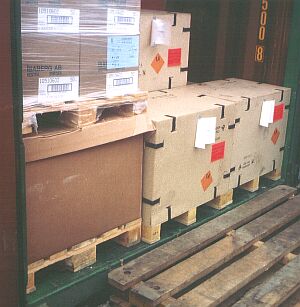 |
|
| Cases with class 1.4G airbags: stowed for ready access |
The amber light has been selected because the load has not yet been adequately secured.
CAP products in the European Community which are subject to customs checks should also be stowed for ready access, so that customs staff have immediate access to the goods. This avoids the need to restow:
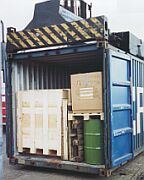 |
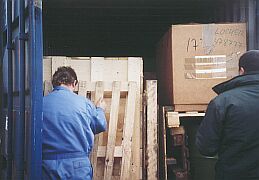 |
|
| The container had to be restowed to make the container door accessible and the cargo had to be partially unloaded to allow access to the CAP products for a customs inspection. | ||
"Top stowage" (occasionally "on-top-stowage") means no further items are stowed on top of the load. This instruction is not to ensure that a batch should be readily accessible, but is issued because packages are particularly sensitive or fragile. If stowage of this type is required, appropriate indications must be attached to the packages. Written instructions such as "Do not overstow", "Please load on top" etc. are not necessarily universally understood. Sensible, comprehensible markings can be more effective.
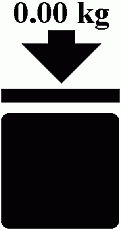 |
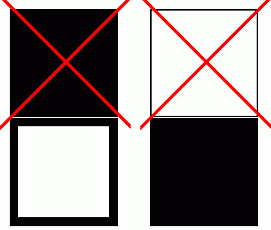 |
|
| Symbol based on ISO | Alternative marking suggestions |
The original ISO symbol should be known universally. It must therefore be assumed that this symbol is the most likely to be understood.
"Stowing or packing correctly for a fork-lift truck or a crane" means that appropriate arrangements must be made to ensure that the goods can be lifted by a ground conveyor or lifting gear without requiring special preparation and without any time delay. The dimensions, strength and loading capacity of the aids used, such as squared lumber, wooden dunnage boards etc. must ensure that the goods do not suffer any damage during shipping. If necessary, stowage surfaces must be prepared with walking boards, boards, cargo items with a high loading capacity or other usable aids, so that work can be carried out safely and the batches that have already been loaded can be overstowed with other loads.
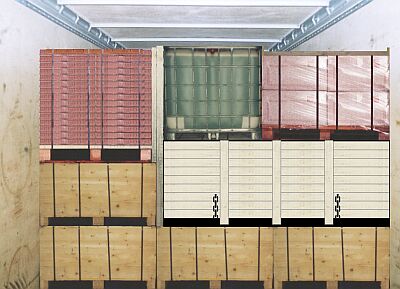 |
|
| Correct stowage suitable for handling with fork lift trucks in a box container |
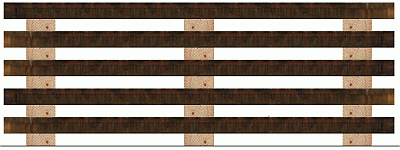 |
|
| Cargo stack suitable for handling with fork-lift trucks and cranes |
Bottom and intermediate dunnage must be arranged so that forks, strops, chains, claws and similar cargo handling equipment and slinging equipment can be used without any problems.
Tier means a layer or stack. It can mean either horizontal layers of cargo or cargo items stowed vertically one above the other. If circumstances do not make it clear from the outset what type of layer is meant, it makes sense to distinguish between a vertical tier and a horizontal tier.
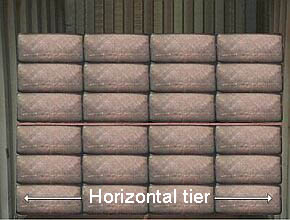 |
 |
|
| Horizontal and vertical tiers | ||
The stowage position on board container ships is generally documented according to the bay-row-tier system or the bay-tier-row system. In this specific case, "tier" designates the horizontal layers of containers. Layers are counted from the bottom to the top.
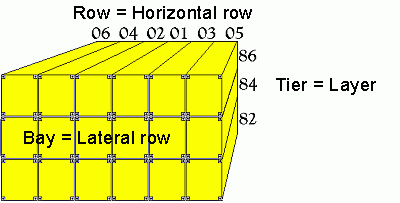 |
|
| Extract from a bay plan showing the containers loaded on deck |
Loaded upright or loaded on its side relates to the shape of the consignment items. In most cases, the meaning is clear.
 |
 |
 |
 |
| Beam is upright | Beam is on its side | Rail is upright | Rail is on its side |
 |
 |
 |
 |
| Disk is upright | Disc is on its side | Box is upright | Box is on its side |
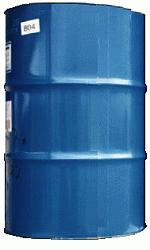 |
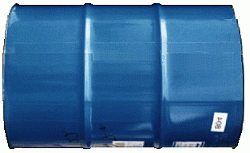 |
|
| Drum is upright | Drum is on its side |
The same applies for wheel rims, pipes, steel bars, narrow wire rod coils and other loads. It is also rare for these to be confused.
With cylindrical, or roller-shaped goods, the expression "upright" should really be used uniformly. Such cargo items are generally understood to be "upright" if
- the axis is vertical and the length of the axis is greater than the diameter or
- the axis is horizontal and the length of the axis is less than the diameter.
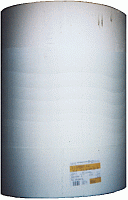 |
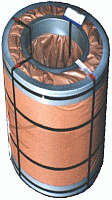 |
||
| Paper roll is upright | Gas cylinder is upright | Coil is upright |
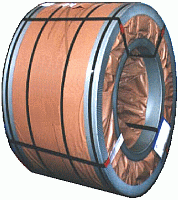 |
 |
|
| Coil is upright | Tire is upright |
The expression "on its side" also has a standard meaning for the same goods. By definition, cargo is "on its side" if
- the axis is horizontal and the length of the axis is greater than the diameter or
- the axis is vertical and the length of the axis is less than the diameter.
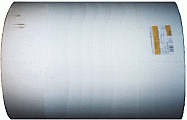 |
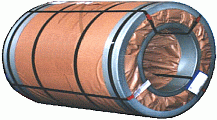 |
|
| Paper roll is on its side | Coil is on its side |
| Gas cylinder is on its side |
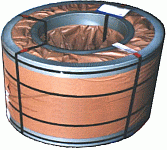 |
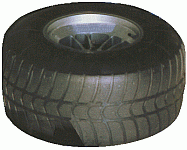 |
|
| Coil is on its side | Tire is on its side |
Differences in understanding of these terms, sometimes regional, however, can lead to errors and misinterpretations and thus incorrect stowage.
Another problem arises if the length of the axis and the diameter are almost the same size. This can easily lead to misinterpretations of the terms in practice:
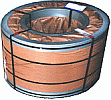 |
Is the coil upright or on its side? |
 |
 |
Is the roll upright or on its side? |
 |
Incorrect expressions in the loading instructions or an incorrect interpretation of correct instructions frequently lead to damaged cargo. Such damage can be avoided if a reference is made in the stowage instructions to the orientation of the axis. Instead of the formulations "Load rolls upright" or "Load rolls on their sides", the expressions "Roll axis vertical" ("eye to the sky") or "Roll axis horizontal and transverse" or "Roll axis horizontal and longitudinal" should be used.
| Misleading formulation | Clear formulation |
| ... load so that | ... load so that |
| Wire rod coils are upright | Ring axis/winding axis positioned vertically (English: "eye to the sky") |
| Wire rod coils are on their sides | Ring axis/winding axis horizontal (English: "eye to lie") or even better: ... Ring axis horizontal longitudinally...or horizontal transversely |
| Cylinders are upright | Cylinder axis is vertical |
| Cylinders are on their sides | Cylinder axis is horizontal, or even better: Cylinder axis is horizontal and longitudinal Cylinder axis is horizontal and transverse |
As already mentioned, the terms "upright" and "on its side" are clear for most cargo items such as billets, pipes, profiles, bars etc., but it can be necessary in certain cases to provide or request more precise stowage instructions, such as "lying on its side" etc.
Continued in section 4.2.4.2